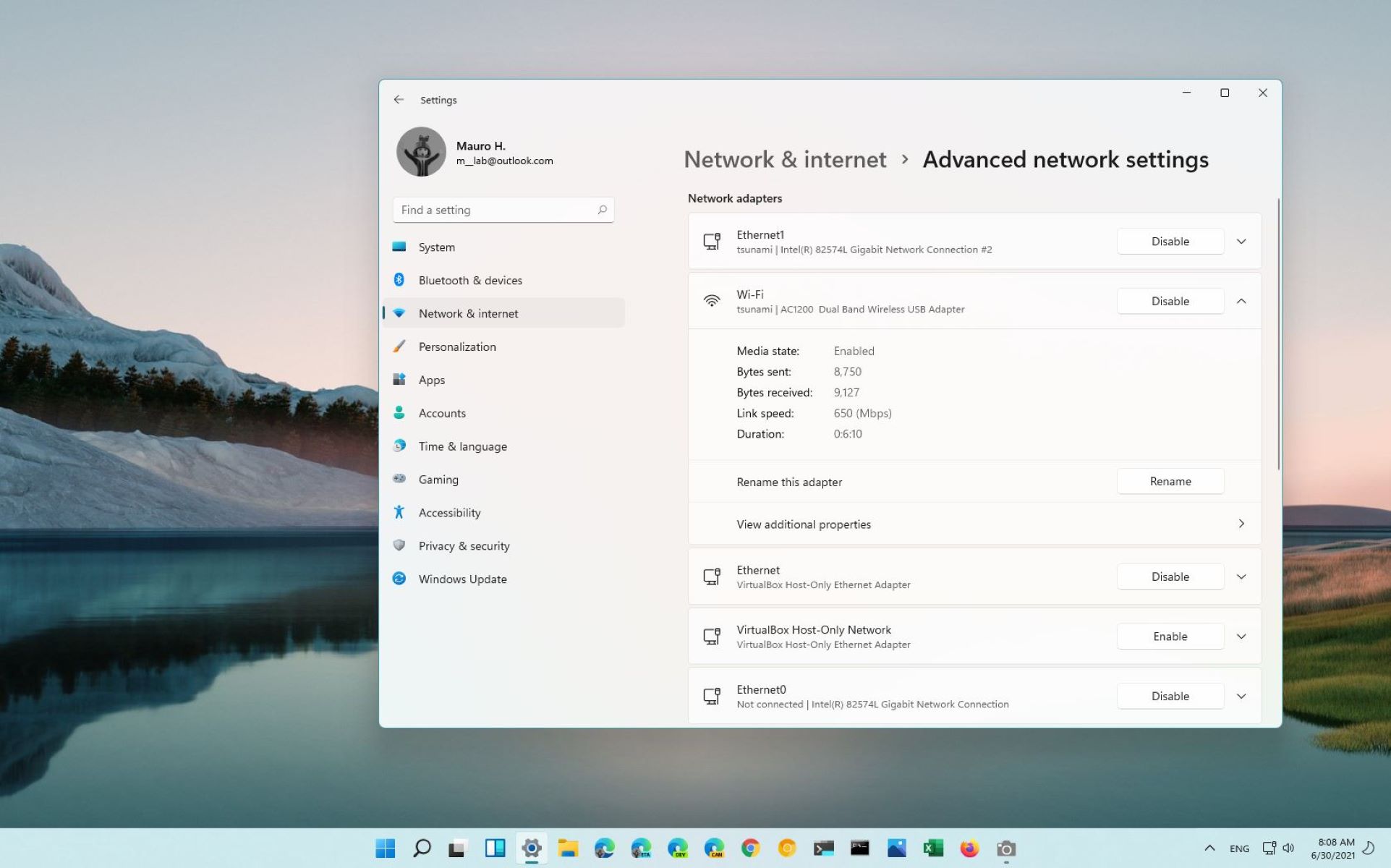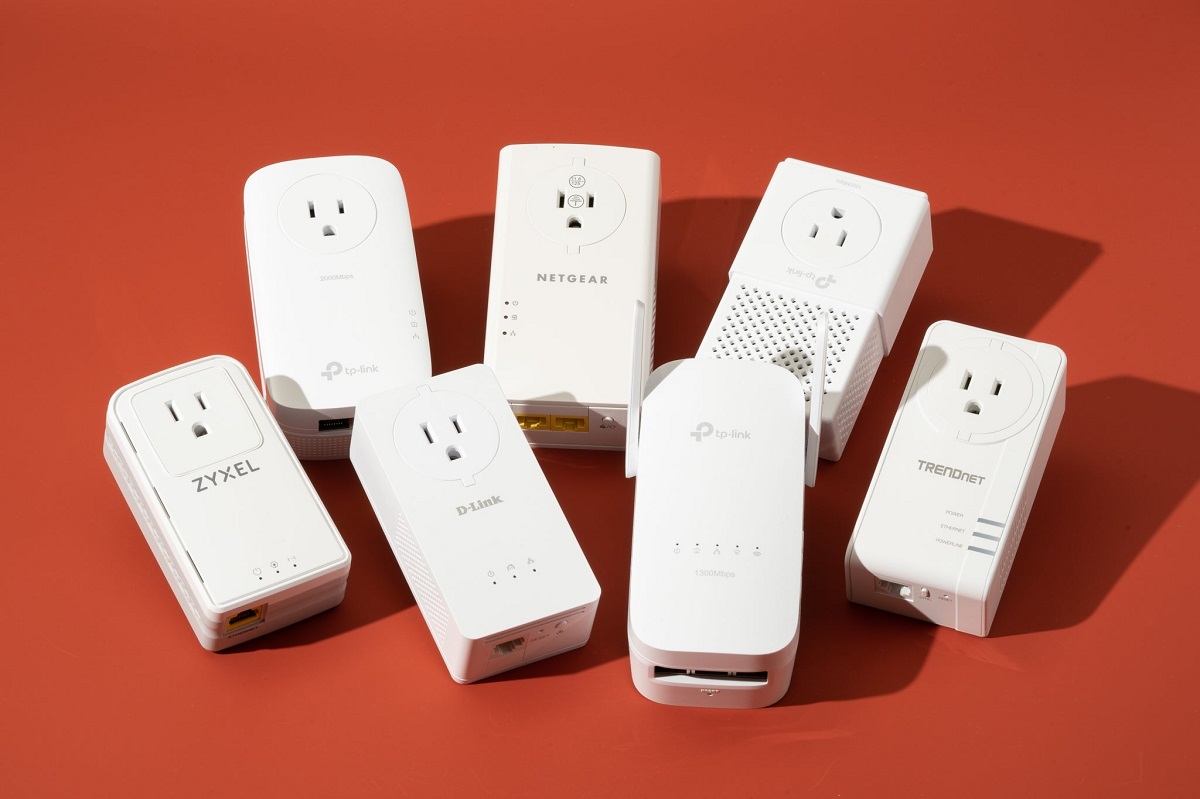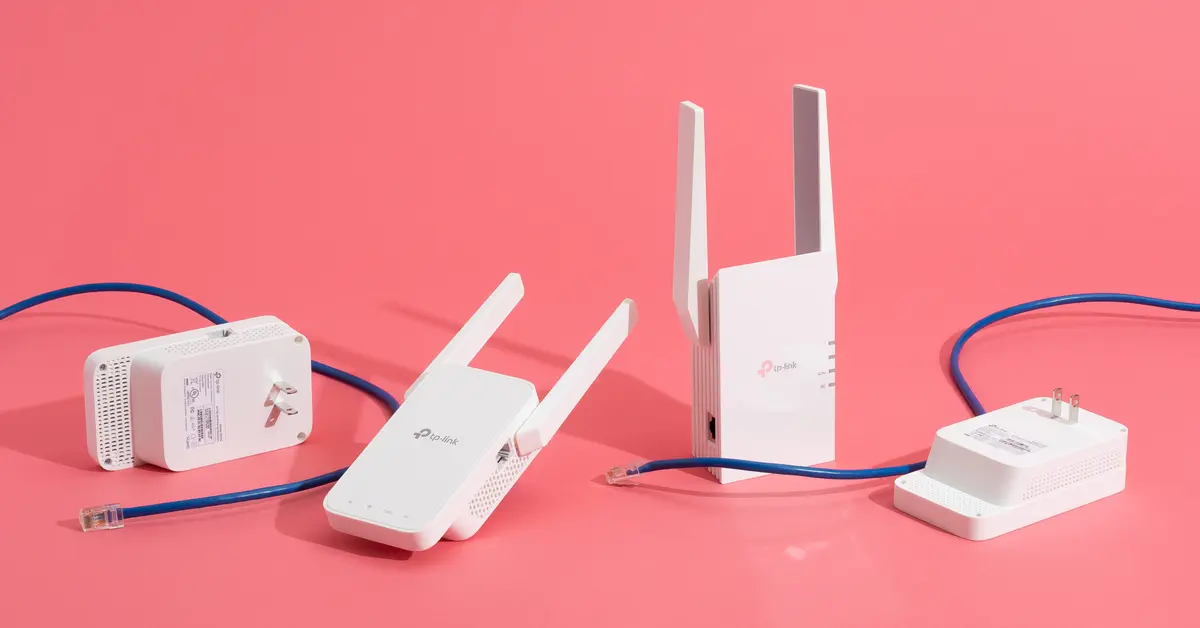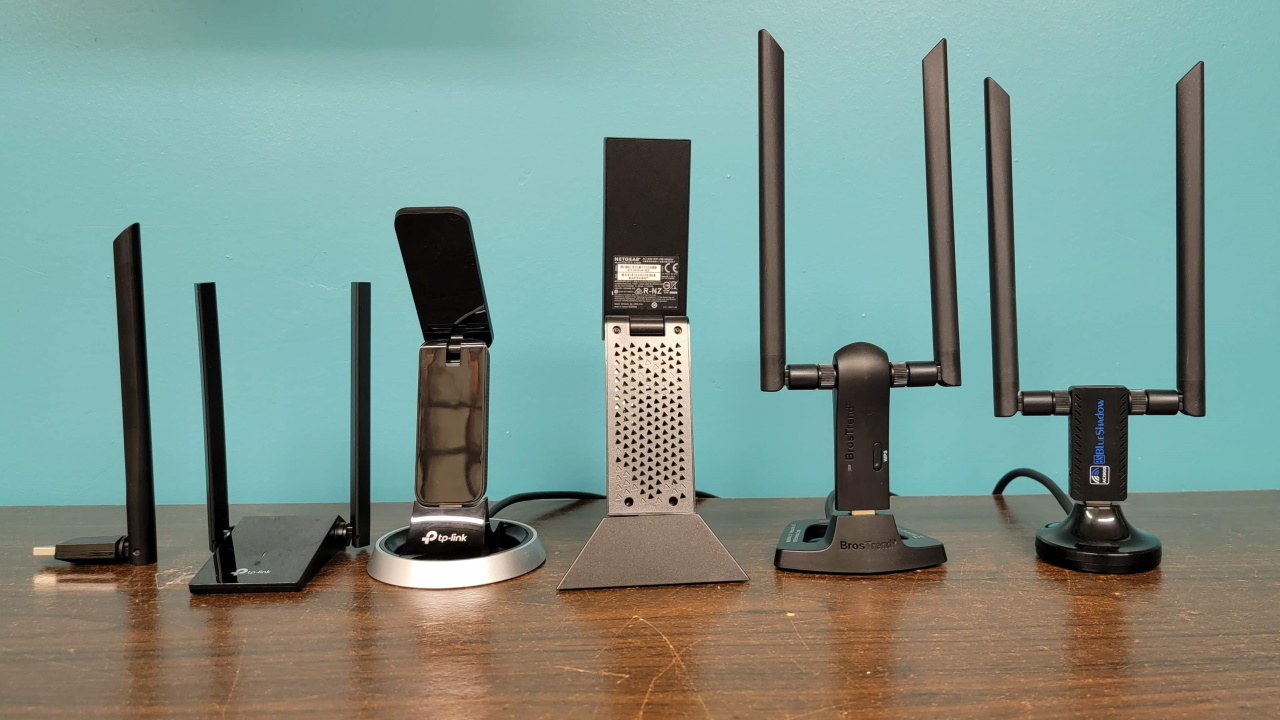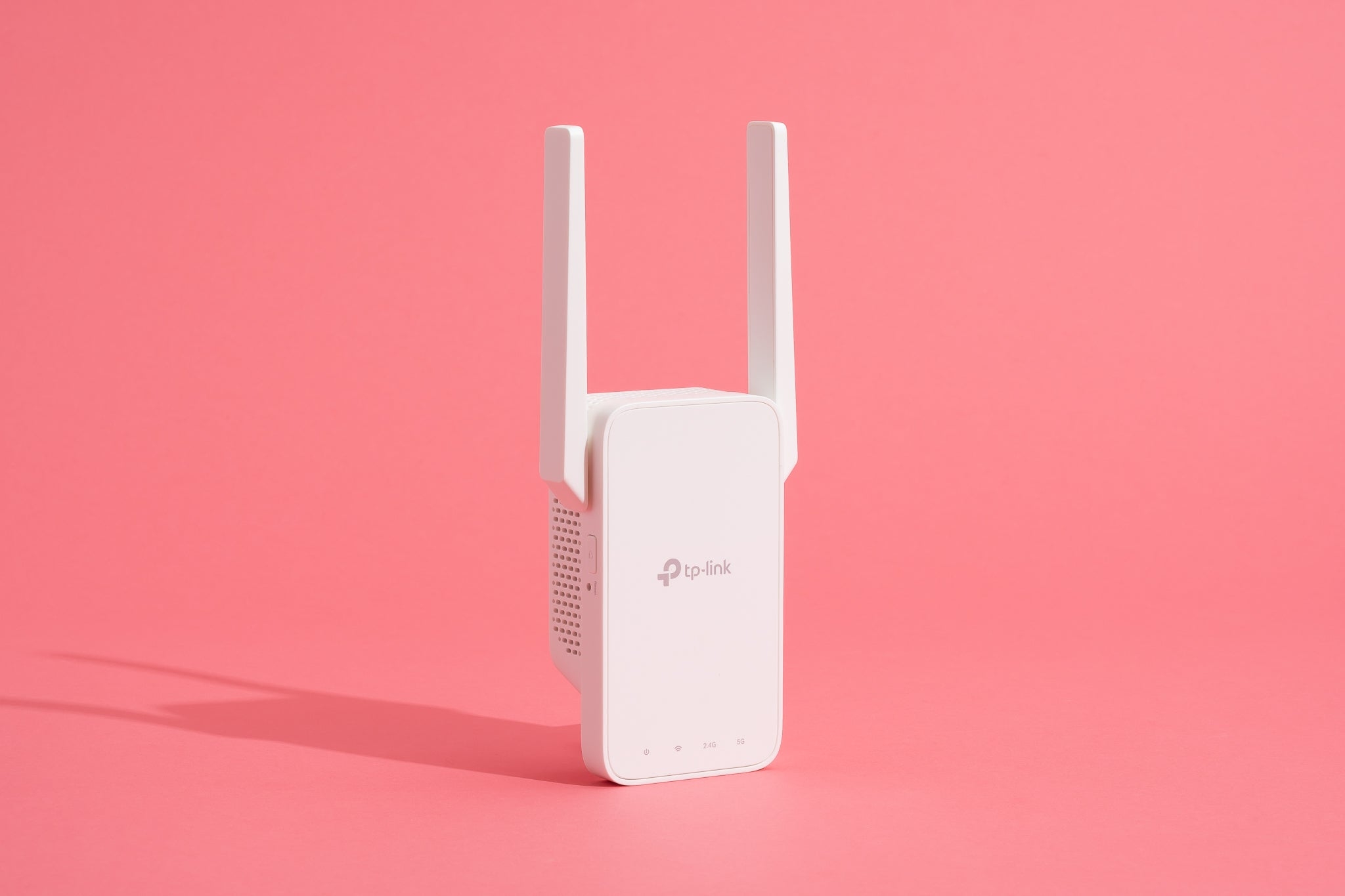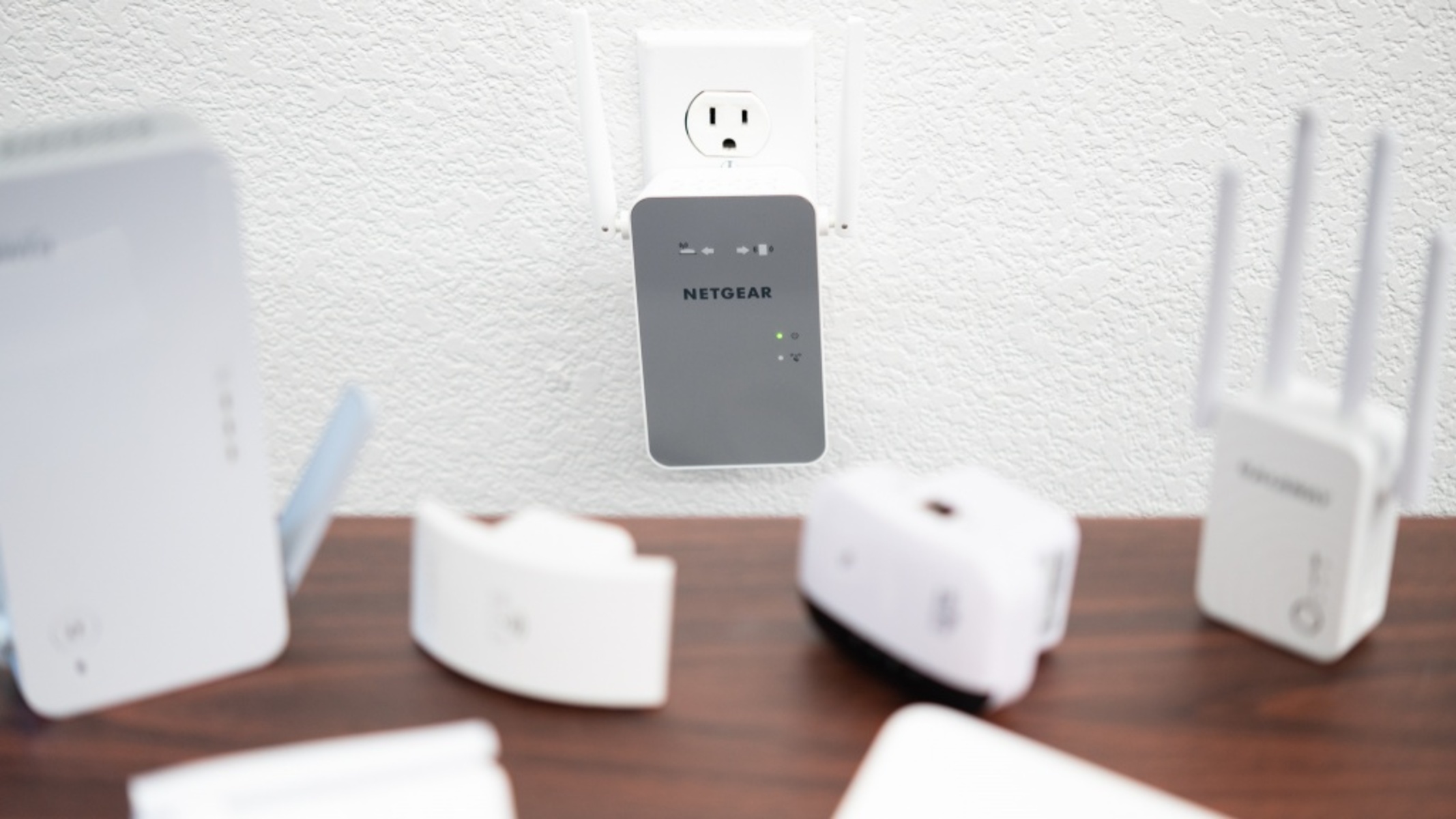Introduction
Welcome to the world of internet connectivity, where you have a multitude of options to choose from. Two of the most popular methods of connecting to the internet are Ethernet and Wi-Fi. Whether you are setting up a new home network, upgrading your office’s infrastructure, or simply trying to understand the differences between the two, it’s important to have a clear understanding of Ethernet and Wi-Fi.
Ethernet and Wi-Fi are both types of networking technologies that allow devices to connect to the internet. However, there are significant differences between them in terms of how they work, their speed, reliability, and use cases. In this article, we will explore the basics of Ethernet and Wi-Fi, discuss their differences, and look at the advantages of each.
Let’s start by understanding what Ethernet is. Ethernet is a wired technology that uses physical cables to connect devices to a network. It has been around for several decades and is widely used in homes, offices, and data centers. Ethernet cables, often referred to as Ethernet patch cables or network cables, utilize a standard called RJ-45 for connectivity.
On the other hand, Wi-Fi stands for Wireless Fidelity. Unlike Ethernet, Wi-Fi is a wireless technology that allows devices to connect to a network without the need for physical cables. Wi-Fi uses radio waves to transmit and receive data between devices and network access points. It relies on a wireless router or access point to provide internet connectivity to multiple devices within its range.
The main difference between Ethernet and Wi-Fi lies in the medium of connection – Ethernet uses physical cables, while Wi-Fi relies on wireless signals. Ethernet offers a more reliable and stable connection as it is not susceptible to interference or signal degradation. Wi-Fi, on the other hand, provides convenience and flexibility as it eliminates the need for cables, allowing devices to connect wirelessly from anywhere within the network coverage area.
Now that we have a basic understanding of Ethernet and Wi-Fi, let’s delve deeper into the advantages and use cases of each technology. Understanding the advantages of both will help you determine when to use Ethernet and when Wi-Fi would be the better choice.
What is Ethernet?
Ethernet is a type of networking technology that allows devices to connect to a network through physical cables. It is a standard protocol used for local area networks (LANs) and is widely used in homes, offices, and data centers.
Ethernet cables, also known as network cables or Ethernet patch cables, are designed to transmit data over short to medium distances. They use a standard connector called RJ-45, which is similar in appearance to a telephone connector but with more pins. These cables connect devices, such as computers, routers, switches, and other network peripherals, directly to an Ethernet switch or a modem-router.
One of the key advantages of Ethernet is its reliability and stability. With a physical cable connection, Ethernet offers a secure and consistent network connection that is not susceptible to interference or signal degradation. This makes Ethernet ideal for tasks that require a stable and fast connection, such as online gaming, video streaming, and large file transfers.
Ethernet connections are known for their high-speed capabilities. Various Ethernet standards, such as Fast Ethernet (100 Mbps), Gigabit Ethernet (1 Gbps), and 10 Gigabit Ethernet (10 Gbps), provide different levels of data transfer speeds. These speeds allow for fast and efficient data transmission between devices on the network.
Another advantage of Ethernet is its ability to support Power over Ethernet (PoE) technology. This feature enables devices, such as IP cameras, wireless access points, and VoIP phones, to receive power through the Ethernet cable, eliminating the need for separate power cables or adapters.
Ethernet is commonly used in environments where network reliability and speed are crucial, such as offices and data centers. It provides a stable and secure connection that can handle high bandwidth requirements. Ethernet is also highly scalable, allowing for the creation of large and complex networks by connecting multiple devices together.
Overall, Ethernet is a trusted and established networking technology that offers reliable and high-speed connectivity. Its physical cable connection and robust performance make it an excellent choice for applications that require stable and fast network connections.
What is Wi-Fi?
Wi-Fi, short for Wireless Fidelity, is a wireless networking technology that allows devices to connect to a network without the need for physical cables. It utilizes radio waves to transmit and receive data between devices and network access points.
Wi-Fi networks are established using a wireless router or access point, which acts as a central hub. These devices receive data from connected devices, such as laptops, smartphones, and smart home devices, and transmit it wirelessly over the airwaves. The devices within the network range can then receive and process the transmitted data.
One of the key advantages of Wi-Fi is its flexibility and convenience. Unlike Ethernet, which requires physical cables, Wi-Fi allows devices to connect to the network from anywhere within the range of the wireless signal. This enables mobility and freedom to move around while staying connected to the internet.
Wi-Fi networks operate on different frequency bands, such as 2.4 GHz and 5 GHz, and utilize various Wi-Fi standards, including 802.11a, 802.11b, 802.11g, 802.11n, and the latest 802.11ac and 802.11ax (also known as Wi-Fi 6). Each standard offers different speeds, range, and compatibility with devices.
Wi-Fi connections provide varying levels of data transfer speed depending on the Wi-Fi standard and the distance between the device and the wireless router. While Wi-Fi speeds have significantly improved over the years, they may not match the speeds offered by Ethernet connections. However, advancements in Wi-Fi technology, such as Wi-Fi 6, have greatly increased its speed and performance.
Wi-Fi networks are encrypted using security protocols, such as Wi-Fi Protected Access (WPA) and Wi-Fi Protected Access 2 (WPA2), to ensure data privacy and prevent unauthorized access. It is important to set a strong password for your Wi-Fi network to protect it from potential security breaches.
Wi-Fi is the preferred choice for homes, cafes, airports, and public spaces where mobility and convenience are essential. It allows multiple devices to connect to the network simultaneously, making it suitable for households with multiple devices and for providing internet access to guests.
Overall, Wi-Fi is a wireless networking technology that offers flexibility, mobility, and convenience. It eliminates the need for physical cables and provides wireless connectivity to a wide range of devices, making it a popular choice for both residential and commercial settings.
The Difference Between Ethernet and Wi-Fi
While both Ethernet and Wi-Fi serve the purpose of connecting devices to a network, they differ significantly in terms of their underlying technology, medium of connection, and use cases. Here are the key differences between Ethernet and Wi-Fi:
1. Medium of Connection: Ethernet uses physical cables to establish a connection between devices and the network. In contrast, Wi-Fi relies on wireless signals transmitted through radio waves, eliminating the need for physical cables.
2. Reliability and Stability: Ethernet offers a more reliable and stable connection compared to Wi-Fi. Ethernet connections are not susceptible to interference or signal degradation, making them ideal for applications that require continuous and uninterrupted connectivity.
3. Speed: Ethernet connections generally provide faster data transfer speeds compared to Wi-Fi. Ethernet standards like Gigabit Ethernet and 10 Gigabit Ethernet offer high-speed capabilities, which can be beneficial for activities such as large file transfers and online gaming. However, Wi-Fi technology has made significant advancements, and the latest Wi-Fi 6 (802.11ax) standard can deliver comparable speeds to Ethernet in certain scenarios.
4. Range: Ethernet connections have a limited range determined by the length of the Ethernet cables. In contrast, Wi-Fi connections can cover a wider area depending on the strength of the wireless signal. This allows for greater flexibility and mobility within the network coverage area.
5. Scalability: Ethernet networks are highly scalable, allowing the connection of multiple devices by using switches and routers. Wi-Fi networks can also support a large number of devices, but the range and performance may be affected as more devices connect to the network simultaneously.
6. Security: Ethernet connections are more secure as they require physical access to the network, whereas Wi-Fi networks can be vulnerable to unauthorized access if not properly secured. Proper encryption protocols and strong passwords are essential to ensure the security of Wi-Fi networks.
7. Installation: Ethernet connections require physical cables to be installed, which can be time-consuming and may involve drilling holes and running cables through walls. Wi-Fi, on the other hand, offers a more convenient installation process as it eliminates the need for cables.
When choosing between Ethernet and Wi-Fi, it is important to consider the specific requirements of your network and the devices you are connecting. Ethernet is better suited for environments that require stable and high-speed connections, such as offices and data centers. Wi-Fi is more suitable for environments that prioritize mobility and convenience, such as homes, cafes, and public spaces.
By understanding the differences between Ethernet and Wi-Fi, you can make an informed decision on which technology best suits your needs and create a reliable and efficient network setup.
Advantages of Ethernet
Ethernet offers several advantages that make it a popular choice for network connectivity in various settings. Let’s explore some of the key advantages of using Ethernet:
1. Reliable and Stable Connection: Ethernet provides a stable and reliable connection due to its wired nature. It is not susceptible to interference or signal degradation, ensuring consistent network performance. This makes Ethernet ideal for activities that require a continuous and uninterrupted connection, such as online gaming, video streaming, and VoIP calls.
2. High-Speed Data Transfer: Ethernet connections offer high-speed data transfer, allowing for fast and efficient communication between devices on the network. Different Ethernet standards, such as Fast Ethernet (100 Mbps), Gigabit Ethernet (1 Gbps), and 10 Gigabit Ethernet (10 Gbps), provide varying levels of speed to accommodate different bandwidth requirements.
3. Low Latency: Ethernet connections have low latency, meaning there is minimal delay in transmitting data between devices. This is especially important for real-time applications like online gaming, virtual meetings, and live streaming, where even a slight delay can significantly impact the user experience.
4. Secure Connection: Ethernet networks are inherently more secure than Wi-Fi networks because physical access to the network is required. This makes it more difficult for unauthorized users to gain access to the network and intercept data. Additionally, advanced security features such as VLANs (Virtual Local Area Networks) can be implemented on Ethernet, providing an extra layer of security for segregating network traffic.
5. Power over Ethernet (PoE) Support: Ethernet supports Power over Ethernet (PoE) technology, which allows devices to receive power through the Ethernet cable. This eliminates the need for separate power cables or adapters and simplifies the installation and management of devices such as IP cameras, wireless access points, and VoIP phones.
6. Scalability: Ethernet networks are highly scalable, allowing for the connection of multiple devices using switches and routers. This makes it easy to expand the network as the number of devices grows, accommodating the evolving needs of businesses and organizations.
7. Cost-Effective: Ethernet solutions are generally more cost-effective compared to wireless alternatives. Ethernet cables are relatively inexpensive and have a longer lifespan. Additionally, the investment in Ethernet infrastructure can provide long-term benefits in terms of network performance and reliability.
Considering the reliability, speed, security, and scalability offered by Ethernet, it is an excellent choice for environments that require stable and high-performance network connectivity. Whether it’s for businesses, data centers, or homes with heavy network usage, Ethernet provides the foundation for robust and dependable network connections.
Advantages of Wi-Fi
Wi-Fi, as a wireless networking technology, offers several advantages that have made it widely prevalent in homes, businesses, and public spaces. Let’s explore some of the key advantages of using Wi-Fi:
1. Mobility and Flexibility: One of the primary advantages of Wi-Fi is its wireless nature, which allows devices to connect to the network without the need for physical cables. Wi-Fi enables mobility within the network coverage area, allowing users to connect and access the internet from various locations within their home or office.
2. Easy Installation and Expansion: Wi-Fi networks are relatively easy to install, especially in comparison to Ethernet. There’s no need for drilling holes or running cables through walls. Setting up a Wi-Fi network involves configuring a wireless router, which can be done by following simple instructions. Additionally, expanding a Wi-Fi network is convenient, as it typically involves adding more devices to the existing network without the need for additional wiring.
3. Convenient Connectivity: Wi-Fi allows multiple devices, such as laptops, smartphones, tablets, smart TVs, and smart home devices, to connect to the network simultaneously. This makes it convenient for households with several devices, as well as for businesses and public spaces that need to accommodate many users and their devices.
4. Wide Coverage Area: Wi-Fi networks can cover a wide area depending on the strength of the wireless signal. This allows for seamless connectivity throughout homes, offices, and public spaces, providing internet access to users across different areas within the network’s coverage range.
5. Guest Access: Having a Wi-Fi network enables guest access, allowing visitors and guests to connect to the internet without accessing the main network. This feature grants secure and controlled access to visitors while keeping the primary network separate and protected.
6. Cost-Effective: Implementing a Wi-Fi network is often more cost-effective compared to Ethernet, particularly when considering the cost of installation and the flexibility of adding or relocating devices without the need for additional wiring. This makes Wi-Fi a cost-efficient solution for homes, small businesses, cafes, restaurants, and other public venues.
7. Evolving Technology: Wi-Fi technology is constantly evolving, with new standards being introduced to enhance performance and meet the increasing demands for faster and more reliable wireless connectivity. The latest Wi-Fi 6 (802.11ax) standard, for instance, offers improved speeds, reduced latency, and increased capacity, making it ideal for handling high-bandwidth applications and a large number of connected devices.
Wi-Fi’s wireless nature, ease of installation, wide coverage area, and flexibility make it an excellent choice for users seeking convenience, mobility, and flexibility in their network connectivity. Whether for home use, businesses, or public spaces, Wi-Fi provides the means to connect multiple devices wirelessly, facilitating seamless internet connectivity and enhancing the overall user experience.
When to Use Ethernet
Ethernet is the preferred choice in certain situations where a wired network connection is advantageous. Let’s explore when it is best to use Ethernet:
1. Need for Reliability: Ethernet is ideal for applications and environments where a stable and reliable network connection is crucial. It is less susceptible to interference and signal degradation compared to Wi-Fi, making it suitable for tasks that require continuous and uninterrupted connectivity, such as online gaming, video conferencing, and large file transfers.
2. High-Bandwidth Requirements: If you frequently engage in activities that demand high bandwidth, such as streaming 4K videos, working with large files, or running data-intensive applications, Ethernet is the preferred choice. Ethernet delivers faster data transfer speeds compared to Wi-Fi, ensuring efficient and seamless data transmission.
3. Security Concerns: Ethernet offers a higher level of security compared to Wi-Fi, as physical access to the network is required. This makes it a suitable choice for environments where data confidentiality and security are critical. Ethernet’s wired nature reduces the risk of unauthorized access and data interception.
4. Network-Intensive Environments: In scenarios where multiple devices need to be connected and share high volumes of data, Ethernet provides the necessary scalability and performance. Whether it’s a large office, a data center, or a server room, Ethernet networks can handle the higher demands without compromising on connectivity or speed.
5. Audio/Video Streaming: For smooth and uninterrupted audio/video streaming experiences, especially during live events or presentations, Ethernet is recommended. Its stable connection and high-speed capabilities ensure minimal buffering and lag for a seamless streaming experience.
6. Long-Distance Connections: Ethernet cables are capable of covering longer distances compared to Wi-Fi signals. Therefore, if you need to establish network connections over extended distances, such as in a large office building or across multiple floors, Ethernet is the more suitable option.
7. Power over Ethernet (PoE) Devices: Ethernet’s support for Power over Ethernet (PoE) technology is advantageous when you have devices like IP cameras, wireless access points, or VoIP phones that require power and network connectivity simultaneously. PoE simplifies the installation process by eliminating the need for separate power cables or adapters.
It’s important to consider the specific requirements of your network and the tasks you need to perform when deciding to use Ethernet. If reliability, high speed, security, scalability, or compatibility with specific devices or applications are essential, Ethernet provides the necessary foundation for a robust and efficient network connection.
When to Use Wi-Fi
Wi-Fi is the go-to choice for numerous situations that require wireless connectivity and flexibility. Here are some scenarios in which Wi-Fi is the preferred option:
1. Mobility and Convenience: Wi-Fi provides the freedom to connect devices wirelessly, making it suitable for environments where mobility and convenience are important. Whether you’re at home, in a coffee shop, or in a public setting, Wi-Fi enables you to connect to the internet and access resources without being tethered to a physical cable.
2. Flexibility in Device Placement: Wi-Fi eliminates the need for physical cables, allowing devices to be placed wherever they are most convenient. This flexibility is particularly valuable in areas with limited cable accessibility or where devices need to be moved frequently without hassle.
3. Temporary Setups: Wi-Fi is ideal for temporary setups or events where setting up Ethernet cables can be impractical or time-consuming. Whether you’re organizing a conference, setting up a pop-up shop, or hosting an outdoor event, Wi-Fi provides a convenient and easily deployable solution.
4. Interconnecting Devices: Wi-Fi networks facilitate the connection of multiple devices simultaneously. This makes it suitable for home environments where multiple family members have smartphones, tablets, laptops, and smart home devices that need to be connected to the network simultaneously.
5. Smart Home Integration: Wi-Fi plays a key role in smart home automation by connecting various smart devices, such as smart bulbs, thermostats, security cameras, and voice assistants, to a central hub. Wi-Fi enables seamless communication and control from a smartphone or other connected devices.
6. Guest Networks: Wi-Fi networks allow the creation of guest networks, providing a separate and controlled access point for guests without compromising the security of the main network. This feature is particularly useful in workplaces, hotels, and public venues where visitors require internet access while keeping the main network secure.
7. Cost-Effectiveness: Wi-Fi offers cost-effective installations compared to wired Ethernet. Implementing a Wi-Fi network typically involves less infrastructure, reducing installation and maintenance costs. This makes Wi-Fi a popular choice for homes, small offices, cafes, and other spaces with budget constraints.
8. IoT Device Integration: The Internet of Things (IoT) has become increasingly prevalent, with various devices designed for Wi-Fi compatibility. Wi-Fi networks provide the connectivity required to integrate IoT devices seamlessly into a home or business environment, allowing for remote monitoring, automation, and control.
Wi-Fi’s wireless connectivity, convenience, flexibility, and compatibility with a wide range of devices make it the preferred choice for situations where mobility, temporary setups, interconnecting devices, smart home integration, and cost-effectiveness are key considerations. By leveraging the advantages of Wi-Fi, users can enjoy the freedom and convenience of wireless connectivity in various environments.
Conclusion
Both Ethernet and Wi-Fi are popular networking technologies that serve distinct purposes and offer unique advantages. Ethernet, with its reliable and stable wired connection, is ideal for applications that require high speed, low latency, and maximum security. It is suitable for environments such as offices, data centers, and situations where devices are stationary and demand a consistent and fast connection.
On the other hand, Wi-Fi provides the convenience and flexibility of wireless connectivity, enabling users to connect multiple devices without the need for physical cables. It is well-suited for environments that prioritize mobility, temporary setups, and interconnecting devices, such as homes, cafes, and public spaces.
When deciding whether to use Ethernet or Wi-Fi, it’s important to consider the specific requirements of your network and the tasks you need to perform. Ethernet is advantageous for applications that demand reliability, high bandwidth, low latency, and strong security. It shines in scenarios where wired connections are necessary, such as heavy data transfers, critical business operations, or environments with security concerns.
On the other hand, Wi-Fi is the preferred choice when mobility, flexibility, convenience, and cost-effectiveness are important. It works well in environments that require wireless connectivity, easy installation, device mobility, and interconnectivity, such as homes, small offices, cafes, and venues hosting temporary events.
Ultimately, the choice between Ethernet and Wi-Fi depends on your specific needs and the nature of your network. In some cases, a combination of both technologies may be the best solution, utilizing Ethernet for critical tasks and Wi-Fi for the convenience of wireless connectivity. By understanding the benefits and considerations of each technology, you can make informed decisions to create a reliable and efficient network setup that meets your requirements and enhances your connectivity experience.









